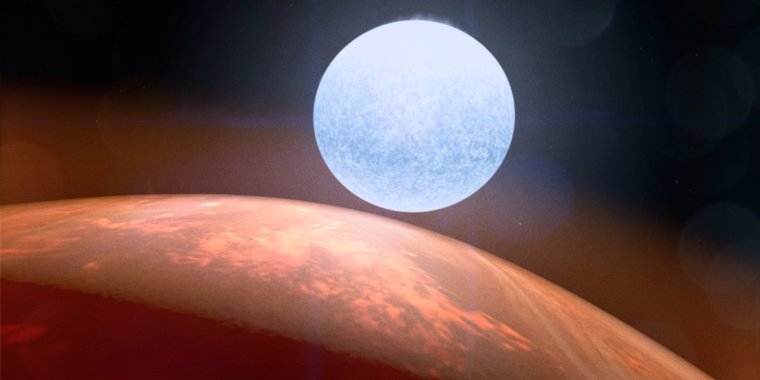| News / Space News |
Astronomers discover the first ‘ultrahot Neptune’: one of nature’s improbable planets
The planet orbits so close to its star that its year lasts only 19 hours, and stellar radiation heats the planet to over 1700 degrees Celsius.

Astronomers discover the first ‘ultrahot Neptune’. Photo: NASA
At these temperatures, heavy elements like iron can be ionised in the atmosphere and molecules disassociated, providing a unique laboratory to study the chemistry of planets outside the solar system.
Although the planet weighs twice as much as Neptune, it is also slightly larger and has a similar density. Therefore, LTT 9779b should have a huge core of around 28 Earth masses, and an atmosphere that makes up around 9% of the total planetary mass.
The system itself is around two billion years old, and given the intense irradiation, a Neptune-like planet would not be expected to keep its atmosphere for so long, providing a puzzle for astronomers to solve; how such an improbable system came to be.
LTT 9779 is a Sun-like star located at a distance of 260 light years, a stone’s throw in astronomical terms. It is metal-rich, having twice the amount of iron in its atmosphere than the Sun. This could be a key indicator that the planet was originally a much larger gas giant, since these bodies tend to form close to stars with the highest iron abundances.
Initial indications of the existence of the planet were made using the Transiting Exoplanet Survey Satellite (TESS), as part of its mission to discover small transiting planets orbiting nearby and bright stars across the whole sky. Such transits are found when a planet passes directly in front of its parent star, blocking some of the starlight, and the amount of light blocked reveals the companion’s size.
LTT 9779b exists in the ‘Neptunian Desert’, a region devoid of planets when we look at the population of planetary masses and sizes. Although icy giants seem to be a fairly common by-product of the planet formation process, this is not the case very close to their stars. The researchers believe these planets get stripped of their atmospheres over cosmic time, ending up as so-called Ultra Short Period planets.
The Kepler mission found that Ultra Short Period planets, those that orbit their stars in one day or less, come mainly in the form of large gas giants or small rocky planets. Models tell us that planets like LTT 9779b should be stripped of their atmospheres through a process called photoevaporation as they move close to their stars.
The large gas giants, on the other hand, have strong gravitational fields that can hold onto their atmospheres, and so we end up with a dearth of planets like Neptune with the shortest orbital periods.
“Planetary structure models tell us that the planet is a giant core dominated world, but crucially, there should exist two to three Earth-masses of atmospheric gas,” said professor James Jenkins from the Department of Astronomy at the Universidad de Chile. “But if the star is so old, why does any atmosphere exist at all? Well, if LTT 9779b started life as a gas giant, then a process called Roche Lobe Overflow could have transferred significant amounts of the atmospheric gas onto the star.”
Roche Lobe Overflow is a process whereby a planet comes so close to its star that the star’s stronger gravity can capture the outer layers of the planet, causing it to transfer onto the star and so significantly decreasing the mass of the planet. Models predict outcomes similar to that of the LTT 9779 system, but they also require some fine-tuning.
“It could also be that LTT 9779b arrived at its current orbit quite late in the day, and so hasn’t had time to be stripped of the atmosphere. Collisions with other planets in the system could have thrown it inwards towards the star. Indeed, since it is such a unique and rare world, more exotic scenarios may be plausible,” said Jenkins. (University of Cambridge)
YOU MAY ALSO LIKE





